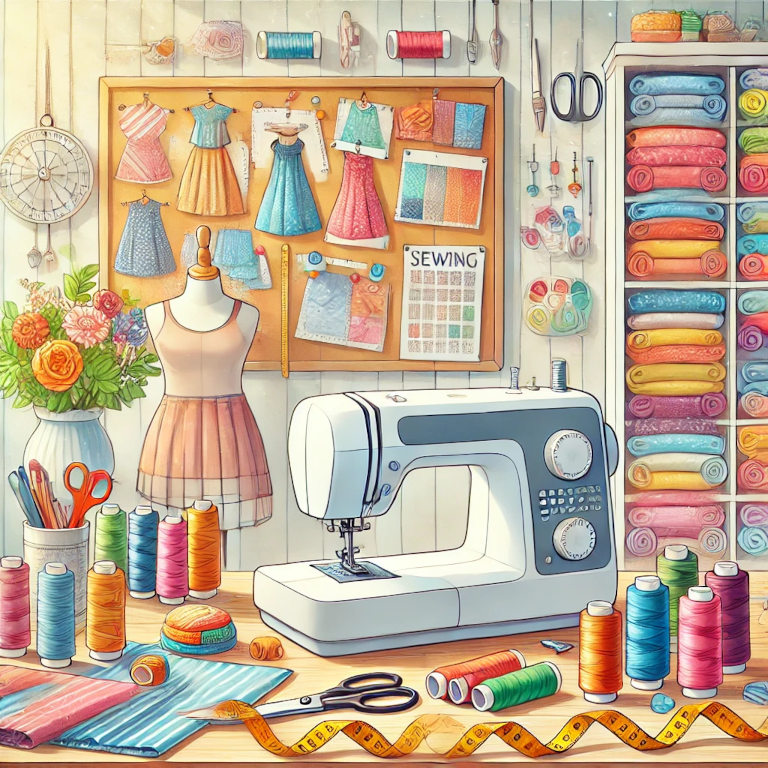Sewing projects are a cornerstone of DIY and Crafts, offering endless opportunities for creativity and personalization. As an expert in DIY and Crafts, I will guide you through various sewing projects, provide tips for getting started, and share insights on how to enhance your skills. Whether you’re a beginner or an experienced sewist, this article will help you discover the joy and satisfaction of sewing.
The Appeal of Sewing Projects
Sewing is a versatile and rewarding craft that allows you to create functional and decorative items. The benefits of sewing projects include:
- Creativity: Sewing provides a creative outlet, enabling you to design and make unique pieces.
- Cost-Effectiveness: Sewing your own items can be more affordable than buying ready-made products.
- Customization: You can tailor projects to your specific needs and preferences, from fabric choices to sizes and styles.
- Sustainability: Sewing encourages the use of recycled materials and helps reduce waste by mending and repurposing old items.
Getting Started with Sewing
Before diving into specific projects, it’s essential to have the right tools and basic knowledge:
1. Essential Tools: Invest in a good quality sewing machine, sharp scissors, measuring tape, pins, needles, thread, and a seam ripper. A rotary cutter and cutting mat can also be helpful for precision cutting.
2. Fabric Selection: Choose fabrics that are suitable for your project. Beginners may find it easier to work with cotton or linen, which are stable and easy to handle. More experienced sewists can experiment with stretch fabrics, silk, or denim.
3. Basic Techniques: Familiarize yourself with basic sewing techniques, such as threading the machine, straight stitching, backstitching, and sewing seams. Practice these skills on scrap fabric before starting a project.
4. Patterns and Instructions: Use patterns and tutorials to guide your projects. Patterns can be purchased or downloaded online, and many come with detailed instructions to help you through each step.
Popular Sewing Projects
1. Tote Bags: Tote bags are practical and relatively simple to make. They require basic straight stitching and can be customized with different fabrics, pockets, and straps. Use sturdy fabric like canvas or denim for durability.
2. Pillow Covers: Sewing pillow covers is an excellent project for beginners. You can create envelope-style covers or add zippers for a more polished finish. Experiment with different fabrics and embellishments to match your decor.
3. Aprons: Aprons are both functional and stylish. They make great gifts and can be personalized with pockets, ruffles, or embroidery. Cotton or linen are good fabric choices for aprons.
4. Clothing Alterations: Learning to alter clothing can save money and extend the life of your wardrobe. Simple alterations like hemming pants, taking in seams, or adding darts can make a big difference in fit and appearance.
5. Quilts: Quilting is a rewarding and creative sewing project that involves piecing together fabric squares to create a larger design. Start with a simple patchwork quilt and progress to more complex patterns as you gain experience.
6. Home Decor: Sewing projects for home decor include curtains, table runners, and placemats. These items can add a personal touch to your living space and are great for practicing different sewing techniques.
7. Clothing: Making your own clothing allows for complete customization in style and fit. Start with simple garments like skirts, dresses, or pajama pants and gradually tackle more complex pieces as your skills improve.
8. Soft Toys: Sewing soft toys or stuffed animals can be a fun project for gifting or decorating. Use soft fabrics like fleece or minky, and add details with embroidery or appliqué.
Tips for Successful Sewing Projects
1. Take Your Time: Rushing through a project can lead to mistakes. Take your time to ensure accuracy and quality in your work.
2. Practice Patience: Sewing can be intricate and detailed, requiring patience. If you encounter difficulties, take a break and return to the project with a fresh perspective.
3. Learn from Mistakes: Mistakes are part of the learning process. Use them as opportunities to improve your skills and gain experience.
4. Stay Organized: Keep your sewing space organized with labeled containers for tools, fabrics, and patterns. This helps maintain focus and efficiency.
5. Seek Inspiration: Look for inspiration from sewing blogs, social media, and craft books. Joining a sewing community can also provide support, ideas, and motivation.
Sewing projects offer a fulfilling and creative way to express yourself while making useful items. From tote bags and pillow covers to clothing and quilts, there are countless projects to explore, each with its own set of skills and techniques. By investing in the right tools, practicing basic techniques, and gradually taking on more complex projects, you can enhance your sewing skills and enjoy the many benefits of this versatile craft. Embrace the art of sewing and discover the joy of creating personalized, handcrafted items that reflect your unique style and creativity.






